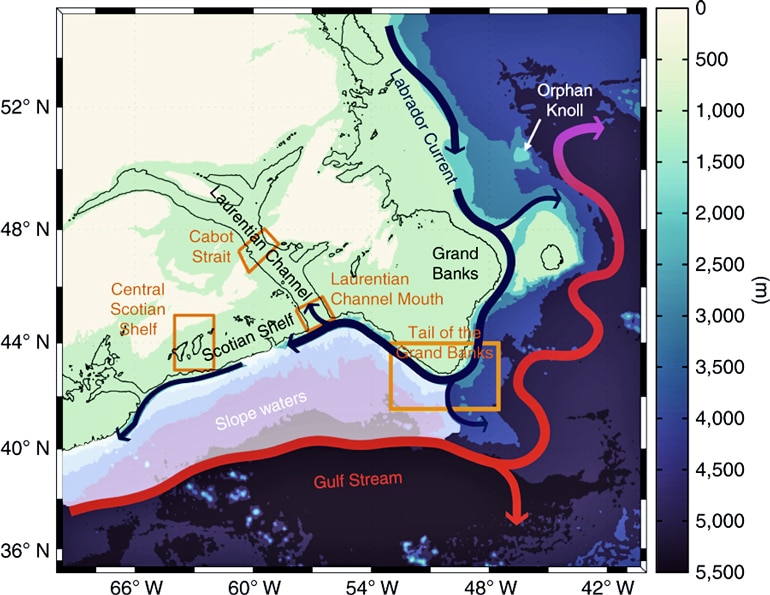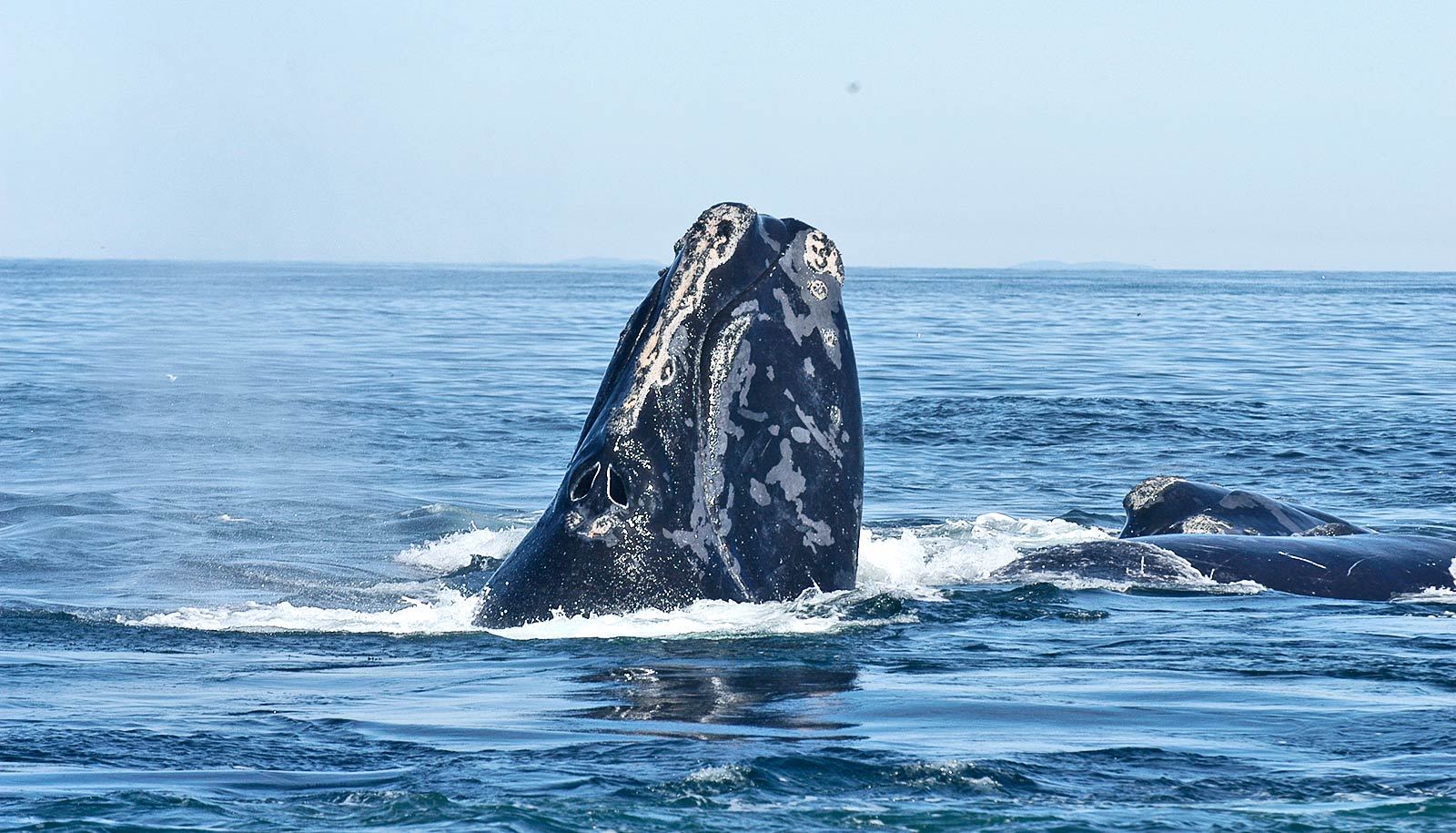A new study links rapid deoxygenation in the Gulf of St. Lawrence to two powerful currents: the Gulf Stream and the Labrador Current.
The broad, biologically rich waterway in Eastern Canada which drains North America’s Great Lakes and is popular with fishing boats, whales, and tourists has lost oxygen faster than almost anywhere else in the global oceans.
The paper, which appears in Nature Climate Change, explains how large-scale climate change already is causing oxygen levels to drop in the deeper parts of this waterway.
“The area south of Newfoundland is one of the best-sampled regions in the ocean,” says first author Mariona Claret, a research associate at the University of Washington’s Joint Institute for the Study of the Atmosphere and Ocean. “It’s also a very interesting area because it’s at the crossroads where two big, larger-scale currents interact.”
Near hypoxia
Canada’s fisheries agency has tracked rising salinity and temperature in the St. Lawrence region since 1920. They’ve only monitored oxygen since 1960, and the declining trend is causing concern.
“Observations in the very inner Gulf of St. Lawrence show a dramatic oxygen decline, which is reaching hypoxic conditions, meaning it can’t fully support marine life,” Claret says.
Oxygen declines have been seen to affect Atlantic wolffish, Claret says, and also threaten Atlantic cod, snow crabs, and Greenland halibut that all live in the depths.

“The oxygen decline in this region was already reported, but what was not explored before was the underlying cause,” says Claret, who did the work while at McGill University.
The findings confirm a recent study showing that, as carbon dioxide levels rose over the past century due to human emissions, the Gulf Stream has shifted northward and the Labrador Current has weakened. The new paper finds that this causes more of the Gulf Stream’s warm, salty, and oxygen-poor water to enter the St. Lawrence Seaway.
Huge simulation
Researchers used output from the National Oceanic and Atmospheric Administration’s Geophysical Fluid Dynamics Laboratory model, a high-resolution computer model that simulates the world’s oceans with a data point every 8 kilometers (5 miles). The simulation took nine months to run using 10,000 computational nodes—huge, even by the standards of global climate models.
With this precision, eddies and details of the coastline that can influence ocean circulation begin to appear. Model output combined with the historical observations show that as the carbon dioxide levels go up, Gulf Stream water replaces Labrador Sea water in the deeper parts of the St. Lawrence gulf.
Storms in the Labrador Sea have churned up the waters that the Labrador Current carries, and so air absorbed at the surface mixes far below the surface. The Gulf Stream, however, is more stratified in stable horizontal layers; the top layer contains oxygen from the air above, but marine life has consumed the lower layers’ oxygen.
What’s next is unknown
What’s more, the warmer Gulf Stream is equally dense at a greater depth, so deeper, more oxygen-deprived layers from the Gulf Stream follow the same density pathway that oxygen-rich near-surface water from the Labrador Current takes.
“We relate a change in oxygen on the coast to a change in large-scale currents in the open ocean,” Claret says.
In the model, the shift in the large-scale ocean circulation causing warming and deoxygenation in the Gulf of Saint Lawrence also corresponds with a decline in the Atlantic Meridional Overturning Circulation, an ocean circulation pattern known to strongly influence Northern Hemisphere climate.
“Being able to potentially link the coastal changes with the Atlantic Meridional Overturning Circulation is pretty exciting,” Claret says.
Analysis shows that half the drop in oxygen observed deep in the St. Lawrence River is just due to the warmer water, which can’t hold as much oxygen. The other half is likely due to other factors, such as biological activity in the two currents and inside the channel.
What will happen next is unknown, Claret says. The oxygen levels in the St. Lawrence will depend on much larger questions, she says, like how much carbon dioxide humans will emit into the atmosphere in the coming decades, and how large-scale ocean currents will respond.
The European Research Council, the Spanish Ministry of Economy and Competitiveness, the Canada Foundation for Innovation, and NOAA funded the work. Additional coauthors are from Autonomous University of Barcelona; the University of Rhode Island; the University of California, Los Angeles; Dalhousie University in Nova Scotia; Fisheries and Oceans Canada; and NOAA’s Geophysical Fluid Dynamics Laboratory.
Source: University of Washington



